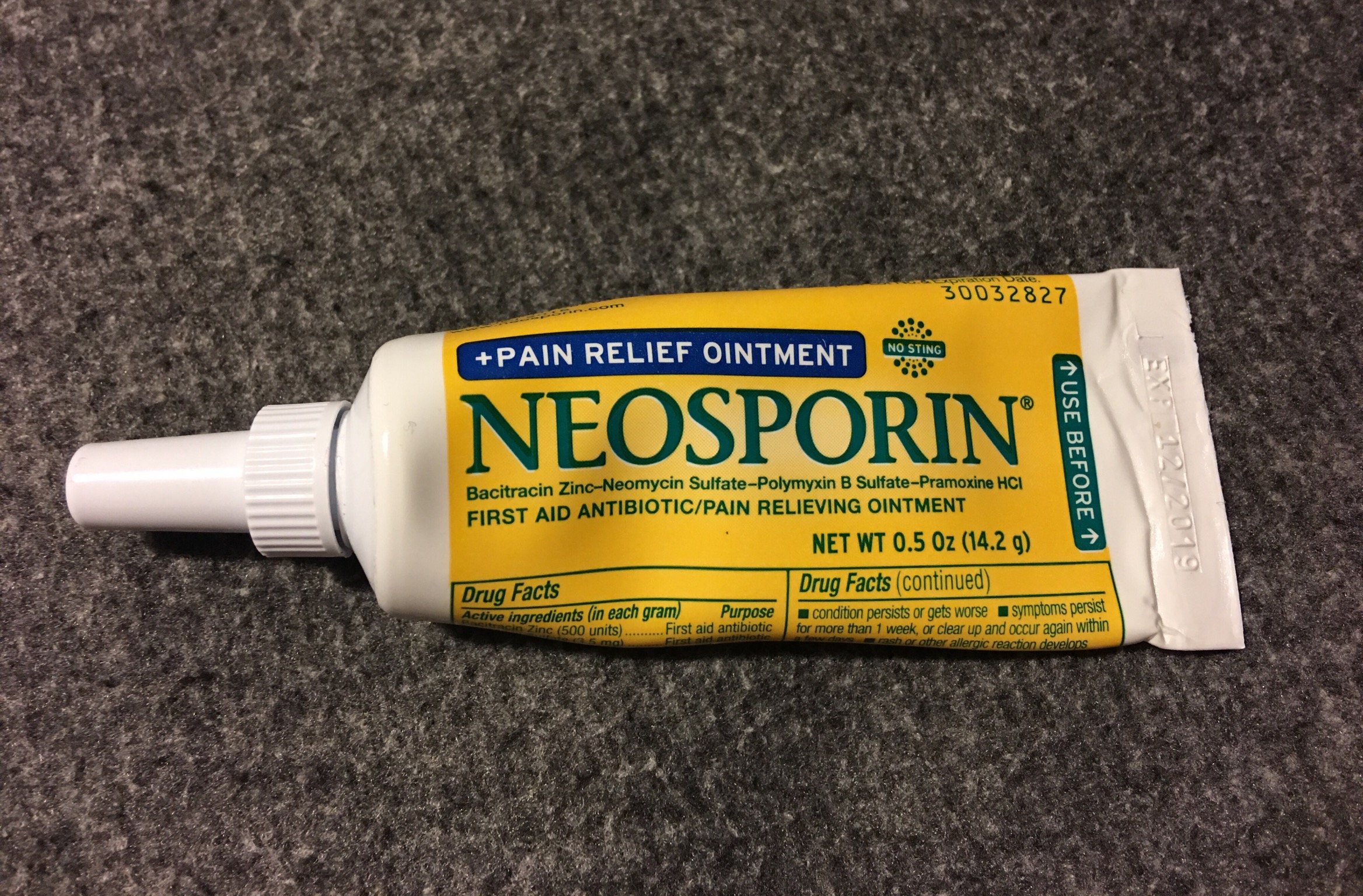| name | Bacitracin and Neomycin Ointment |
| classification | Topical Antibacterial |
| mechanism of action | Bacitracin inhibits bacterial cell wall synthesis, while neomycin inhibits protein synthesis. This combined action provides broad-spectrum antibacterial activity. |
| pharmacokinetics | | absorption | Minimal systemic absorption after topical application. Primarily acts locally. | | distribution | Limited distribution, primarily confined to the site of application. | | metabolism | Minimal metabolism. | | excretion | Eliminated primarily through the skin, with some excretion in urine and feces. |
|
| suggested dosage | | adult | Apply a thin layer to the affected area 1-4 times daily. | | notes | Dosage and frequency may vary depending on the severity of infection and clinician's judgment. Follow healthcare provider's instructions carefully. |
|
| indications | Topical treatment of minor skin infections caused by susceptible bacteria, such as impetigo, minor burns, and skin abrasions. Consult a healthcare professional for optimal treatment. |
| safety in pregnancy | | status | Generally considered safe for topical use during pregnancy, but consult with your doctor. | | notes | Limited data on use during pregnancy, so careful monitoring is warranted. |
|
| safety in breastfeeding | | status | Generally considered safe for topical use during breastfeeding, but consult with your doctor. | | notes | Limited data on use during breastfeeding, so careful monitoring is warranted. |
|
| side effects | | 1 | | effect | Skin irritation (e.g., redness, itching, burning) | | severity | Mild |
| | 2 | | effect | Allergic reactions (e.g., rash, hives, swelling) | | severity | Moderate-Severe |
| | 3 | | effect | Contact dermatitis (in some individuals) | | severity | Variable |
| | 4 | | effect | Local skin reactions (e.g., dryness, scaling) | | severity | Mild |
| | 5 | | effect | Superinfection (rare) | | severity | Potential |
|
|
| alternatives | | 1 | | | 2 | | name | Polymyxin B and Bacitracin ointment | | class | Topical Antibacterial |
| | 3 | | name | Fusidic Acid | | class | Topical Antibacterial |
| | 4 | | name | Gentamicin Ointment | | class | Topical Antibacterial |
|
|
| contraindications | | 1 | Known allergy to bacitracin, neomycin, or any component of the ointment. | | 2 | History of severe skin reactions to topical antibiotics | | 3 | Use in the eyes (potential corneal toxicity of neomycin). | | 4 | Severe kidney impairment (requiring dosage adjustment in some cases - consult a physician). |
|
| interactions | | 1 | Potential for allergic reactions if used with other topical medications. | | 2 | Concurrent use with other topical antimicrobials may increase the risk of skin reactions. | | 3 | May potentiate the effects of other topical medications (consult with a healthcare professional). |
|
| warnings and precautions | | 1 | Discontinue use if signs of allergic reaction or severe irritation develop. | | 2 | Avoid contact with eyes. | | 3 | Do not use on large open wounds or deep tissue injuries without medical advice. | | 4 | Ensure proper hand hygiene before and after application. | | 5 | The ointment may stain clothes. | | 6 | Monitor for signs of superinfection (e.g., worsening infection, unusual discharge). | | 7 | Check for bacterial susceptibility before using |
|
| additional informations | | special instructions | Apply a thin layer of ointment to the affected area; avoid applying excessive pressure. Cleanse the area thoroughly before application. | | storage instructions | Store at room temperature away from direct sunlight and moisture. | | available strengths | Refer to product packaging for available strengths. |
|
| patient specific notes | | age and weight considerations | Age and weight are not significant factors for topical application in this case. Follow dosage guidelines for adults. However, specific considerations exist for pediatrics (consult with a healthcare professional). | | renal hepatic impairment | Adjustments may be necessary in patients with severe renal or hepatic impairment. Consult a healthcare professional. |
|

